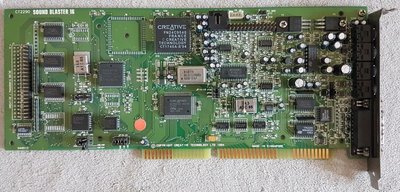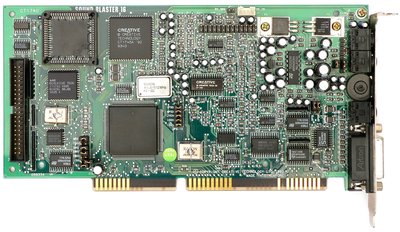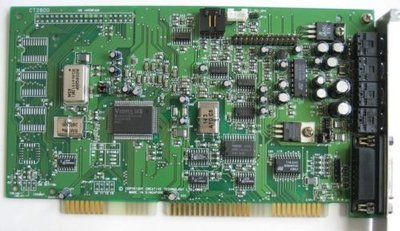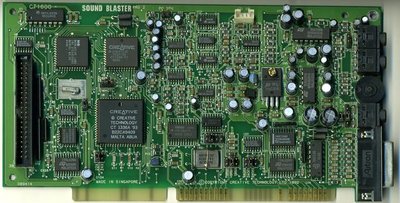Sorry, but I believe that you're confusing several things:
appiah4 wrote:That depends on what you will do with it.
CT1600 is the most compatible, has genuine OPL3 and no MPU-401 hanging note bug but does not have 16-bit audio support or a wavetable header.
CT1600 does not have MPU-401 at all. So yeah, it doesn't have bugs, but that's because you can't use it with external MIDI modules or waveblaster daughterboards. 😀
appiah4 wrote:CT2800 is the most silent of the lot, and has no MPU-401 hanging note bug as well as a wavetable header.
I don't think any Vibra is free of hanging note bugs — it will give you issues in Doom. However, it does have a very clean output, so it's a great card for those who don't need MIDI or use MIDI through a dedicated card (like Yamaha SW60XG, for instance). Or you can just install a cheap non-Creative card into another ISA slot (like Yamaha or ESS) and drive a MIDI device/daughterboard through that card.
appiah4 wrote:CT2290 has variable noise floor depending on the CT1703 chip (although even the best of the lot has more noise than the Vibra) on the board and no MPU-401 hanging note bug due to incorporating CT1745, as well as genuine OPL3 FM Synth Chip.
It's CT1747, not CT1745. AFAIK it's free from most MIDI bugs (so it will sound properly in Doom), but it's not completely bug-free. I have a similar CT2230 with a Dreamblaster X2 daughterboard and I haven't noticed any issues though. Also, I don't feel like it's noisy (I'm using a CT2940 Vibra for comparison), but AFAIK there are differences between newer and later revisions of the same card.
And then there is Sound Blaster CT1740. I have absolutely no experience with CT17**, so don't quote me on that, but I know that some revisions of CT1740 are supposed to be completely bug-free. But you have to know the DSP version number — it's silkscreened on the biggest square chip, so it's kind of impossible to catch on the photo. You can either ask the seller or maybe someone here knows an easier way to tell the version of the card. Here's some info.
Personally, I'd go for CT2290. The bugs are next to non-existent, and you can always mitigate noise by tinkering with the mixer and your speakers' amplifier.



